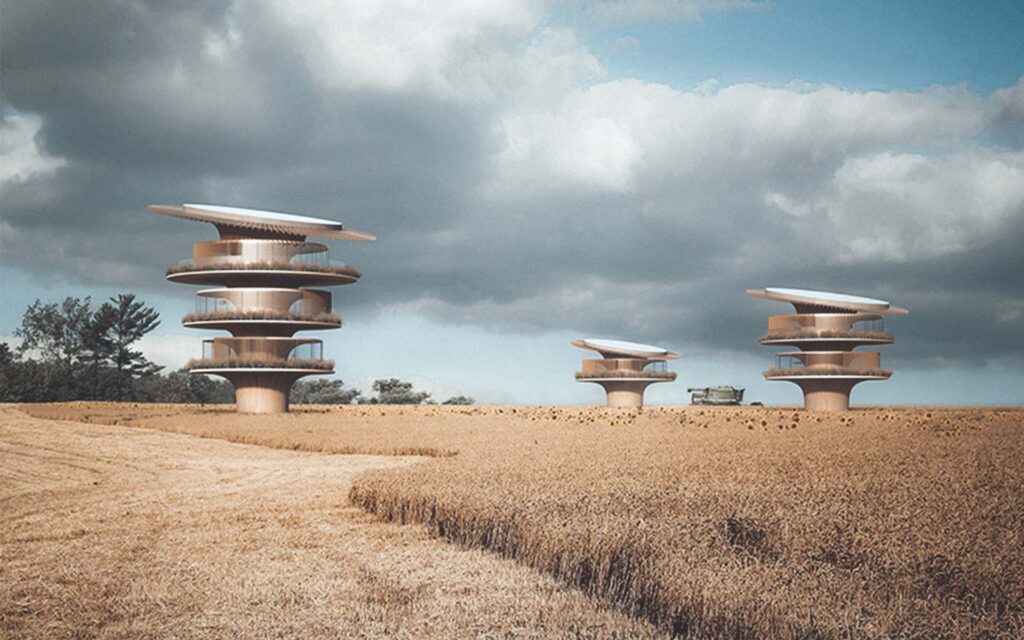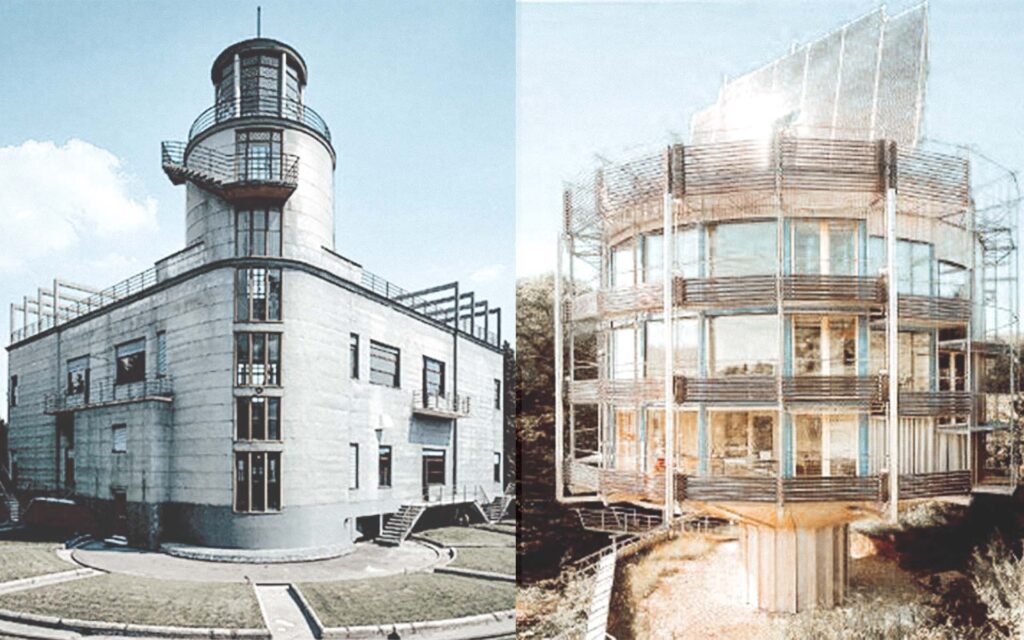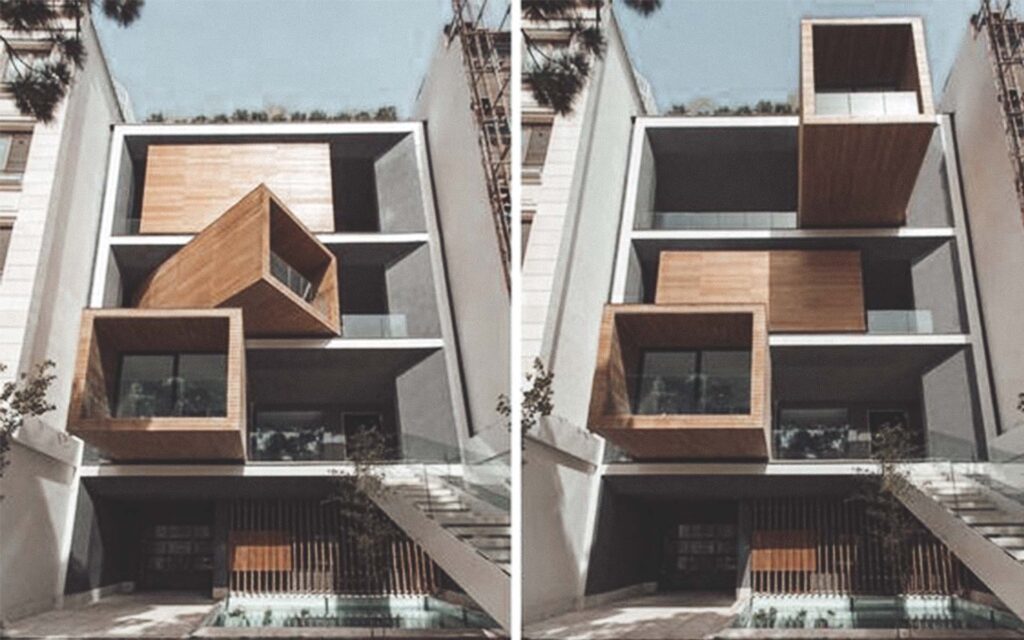Like a sunflower that captures solar energy, adapting its exposure to the path of the sun, and following its movement in the sky, this is how the Sunflower House, designed by architect Koichi Takada works. The House rotates on its axis to always orient itself towards the sun’s rays. In this way, the Sunflower House optimizes its exposure, allowing it to self-generate its own energy with the help of photovoltaic solar panels. The design of a house that works like a sunflower was commissioned by Bloomberg Green with the aim of creating a prototype of a single-family home, a building able to meet standards of self-sufficient, sustainable, and bio architecture.

Learning from nature
The Sunflower House has the explicit intention to take inspiration from nature, but not only on the aesthetic level. It’s about understanding the natural dynamics, adopting their brilliant solutions (as in the case of sunflowers), and regaining the lost balance between man and nature.
Why do architects design buildings that resemble something that can be found in nature? A sunflower, a leaf, a tree.
This process is called biomimicry. It’s not just about the shape or aesthetics of an artifact. According to Koichi Takada, taking inspiration from the beauty of nature is not enough. We can go further and offer innovative solutions by understanding the intrinsic functioning of nature to replicate its functional benefits and also its benefits regarding environmental sustainability.
Starting from where we live
The movement that has as its slogan “Form follows nature” is certainly a great change. But it is also starting from home, from the most intimate and welcoming place. An archetype of living the planet in purely quantitative terms, the sunflower solution allows it to produce 40% more energy. Solar panels provide more energy than the house consumes. In addition, the sunflower house adopts the criteria of bioclimatic architecture. It is equipped with a rainwater collection system. It uses natural ventilation. In this way, it obtains better thermal and hygrometric comfort.

At the moment, the sunflower house is still only a proposal. But if it were built, it could have up to three levels. Each apartment would have from two to three bedrooms. Building a neighborhood of sunflower houses would also be a way to fight climate change.
“For the future of the planet, we must move from industrial to natural. We need a kinetic and vibrant architecture that respects the environment and improves the welfare of the human beings who inhabit it.”
Koichi Takada says that climate change is an opportunity to initiate a positive change in architecture, starting from our home. “For the planet’s future, we must move from industrial to natural. We need a kinetic architecture and vibrant that respects the environment and improves the welfare of the human beings who inhabit it.”

Background
The first sunflower house was built, between 1929 and 1935, in the countryside of Verona. Precisely in Marcellise, the Villa Girasole is the work of the Italian engineer Angelo Invernizzi. It is the first rotating house that follows the sun to exploit its thermal energy. At the same time, it allows enjoying the view of the surrounding landscape.
In 1994, German architect Rolf Disch built a rotating house in Freiburg, in the heart of the Black Forest. The Heliotrope house (from the Greek “facing the sun”) has a cylindrical shape and rotates on itself by 2 degrees every 10 minutes, following the solar path. The central reinforced cement column is anchored on the turntable. An electric motor drives it. In winter, the house is oriented toward the sun, while in summer towards the opposite side.

Sharifi-ha House
More recently, the Iranian architect Alireza Taghaboni created the Sharifi-ha House. The building is located in Tehran and its name is an homage to ancient Iranian villas. It was inspired by the traditional bio-architecture of the country, with houses with closed living rooms for winter and open for summer. Taghaboni compared the project to a living organism, that mutates in relation to habitat changes.
Sharifi-ha is a house that can be transformed according to climatic and functional needs. Three capsules can rotate 90 degrees, resulting in various distributions in the design of the façade, but also in the internal arrangement. Living comfort is dosed so that each room can have the most appropriate perspective and orientation, taking advantage of the appropriate air flow, shielding the sun’s rays, and changing the rooms’ dimensions.

Dynamic object
There can be many solutions. Those adopted in the Sunflower house allow you to optimize the temperature and internal lighting by customizing your spaces according to your needs.
The building is like a dynamic object that changes over the day. To make shade when the sun is shining and shelter from the weather. Adopting the maximum of natural solutions.
This proposal, for the future, is based on simple methods: natural ventilation and radiation, passive cooling and recovery of heat inputs, thermal inertia, orientation, and conscious use of energy. The principles of bioclimatic architecture are applied to a frugal architecture, made of relevant and conscious technologies that are not polluting or expensive, which involves the inhabitant at every level.
To learn more: Koichi Takada Architects
You may also be interested in: Stricter Textile Disposal Rules





